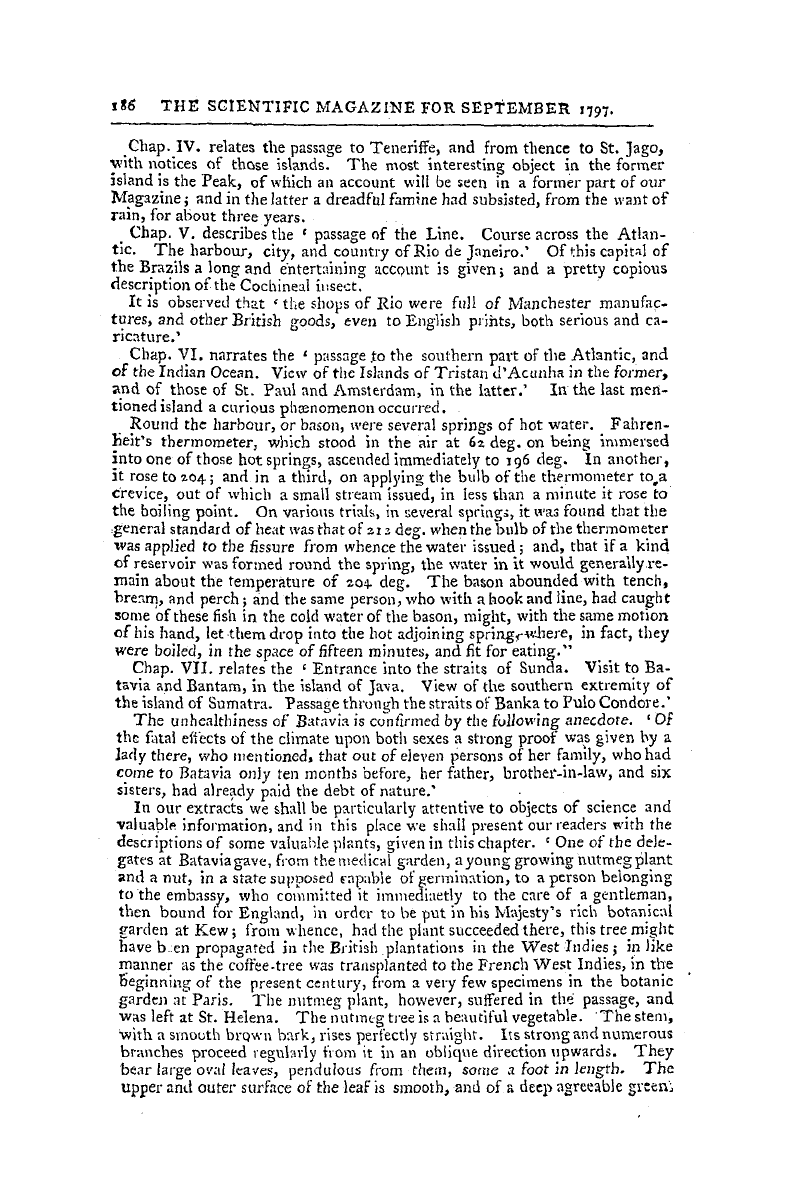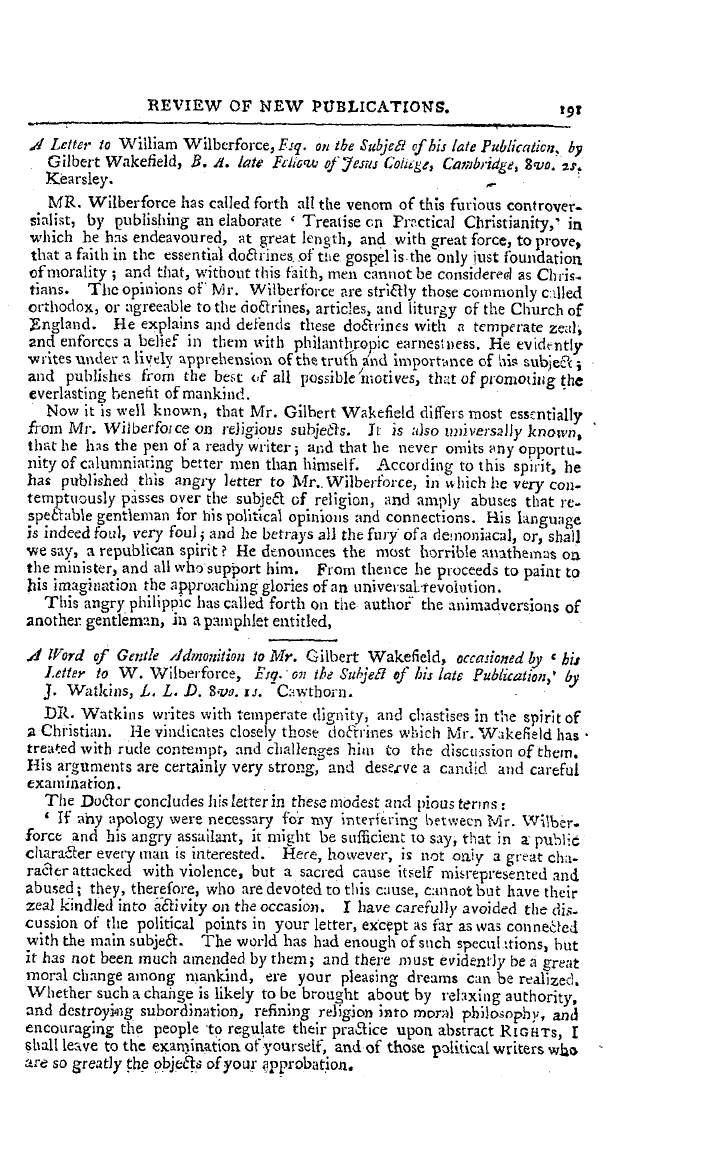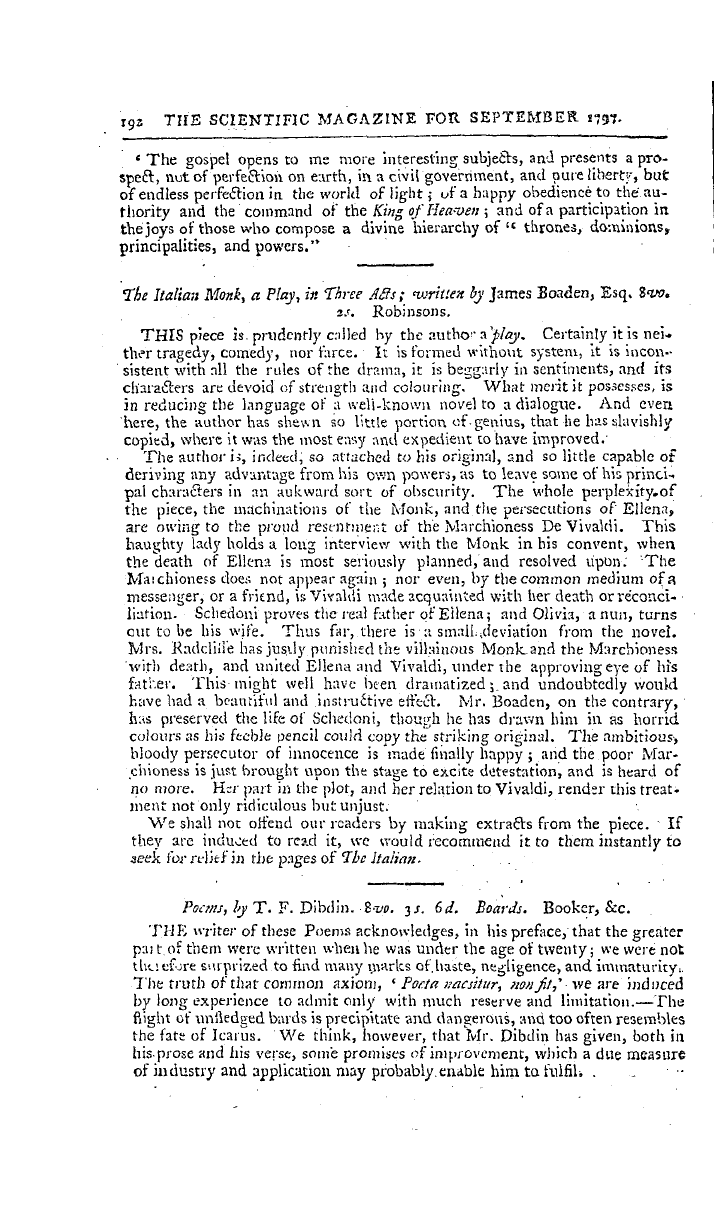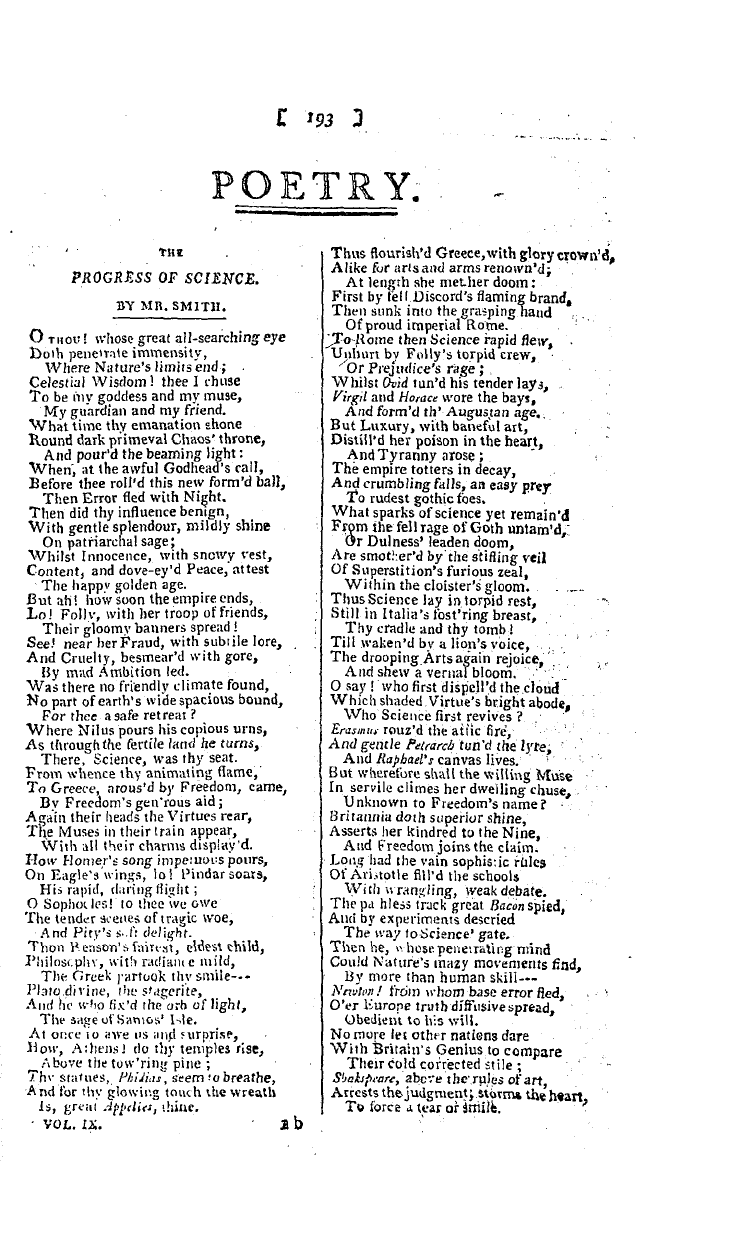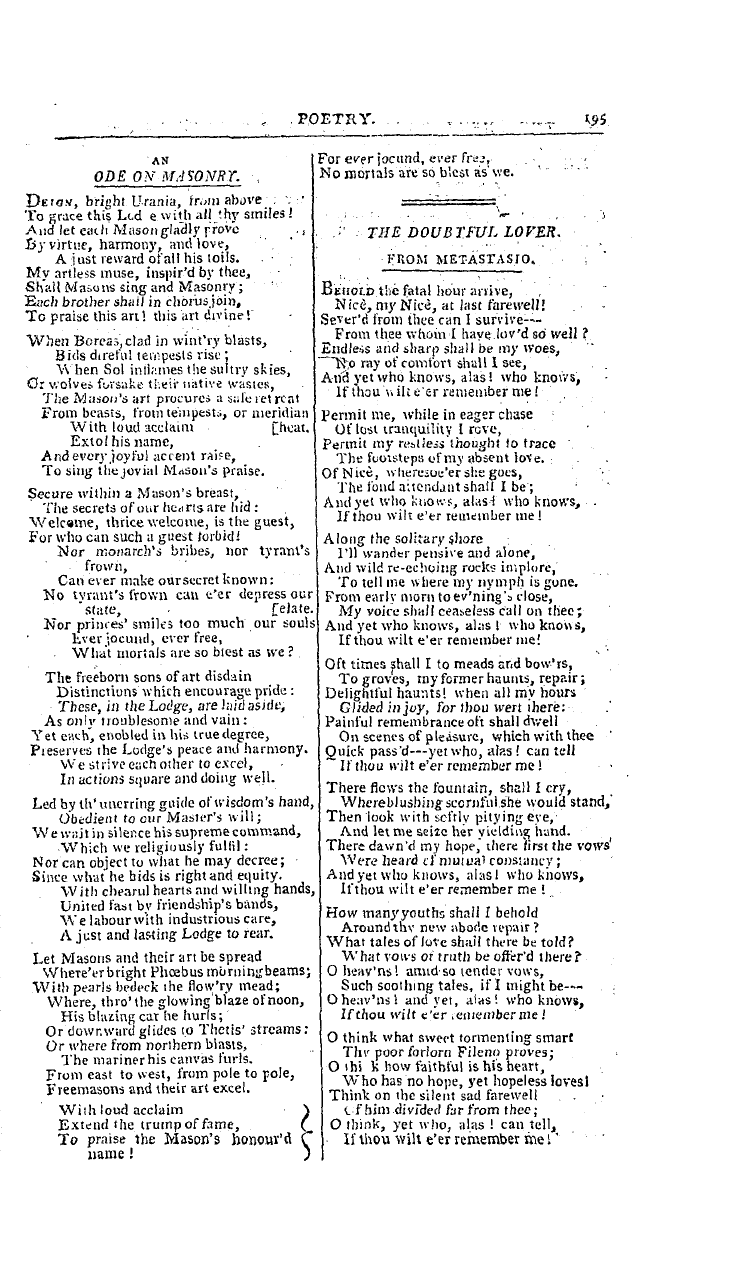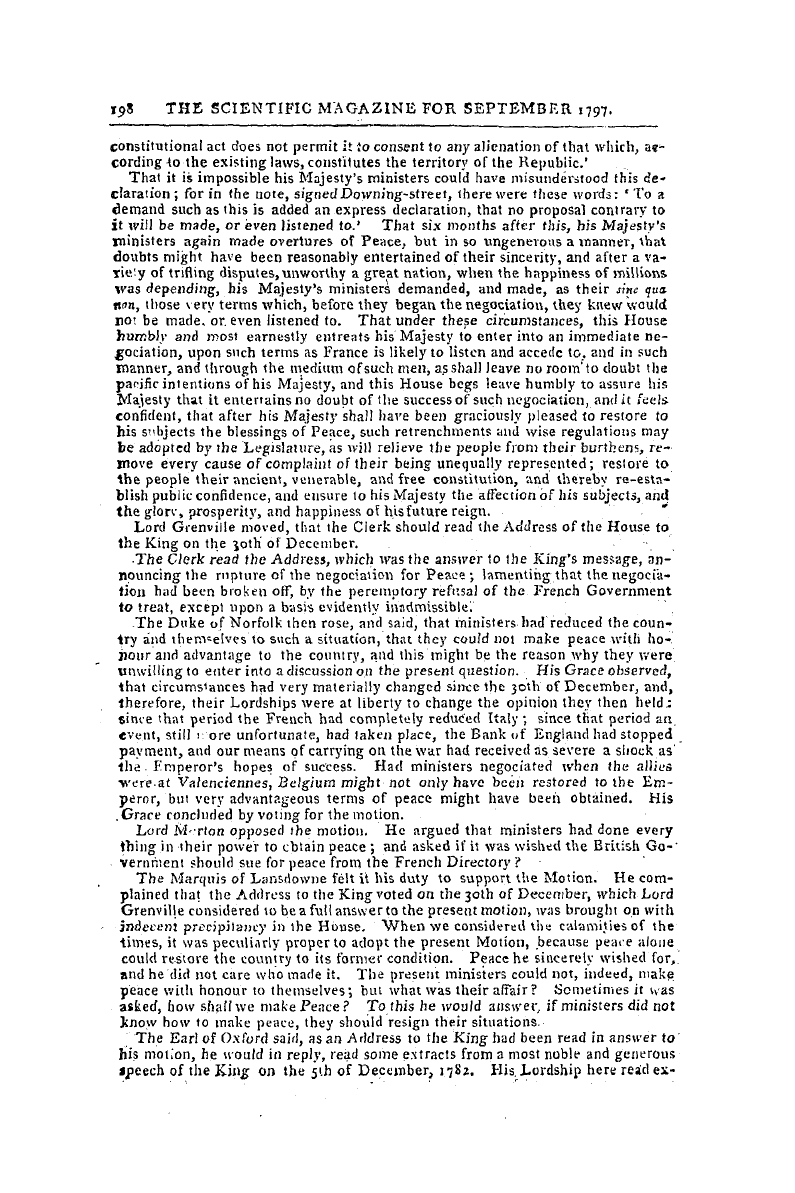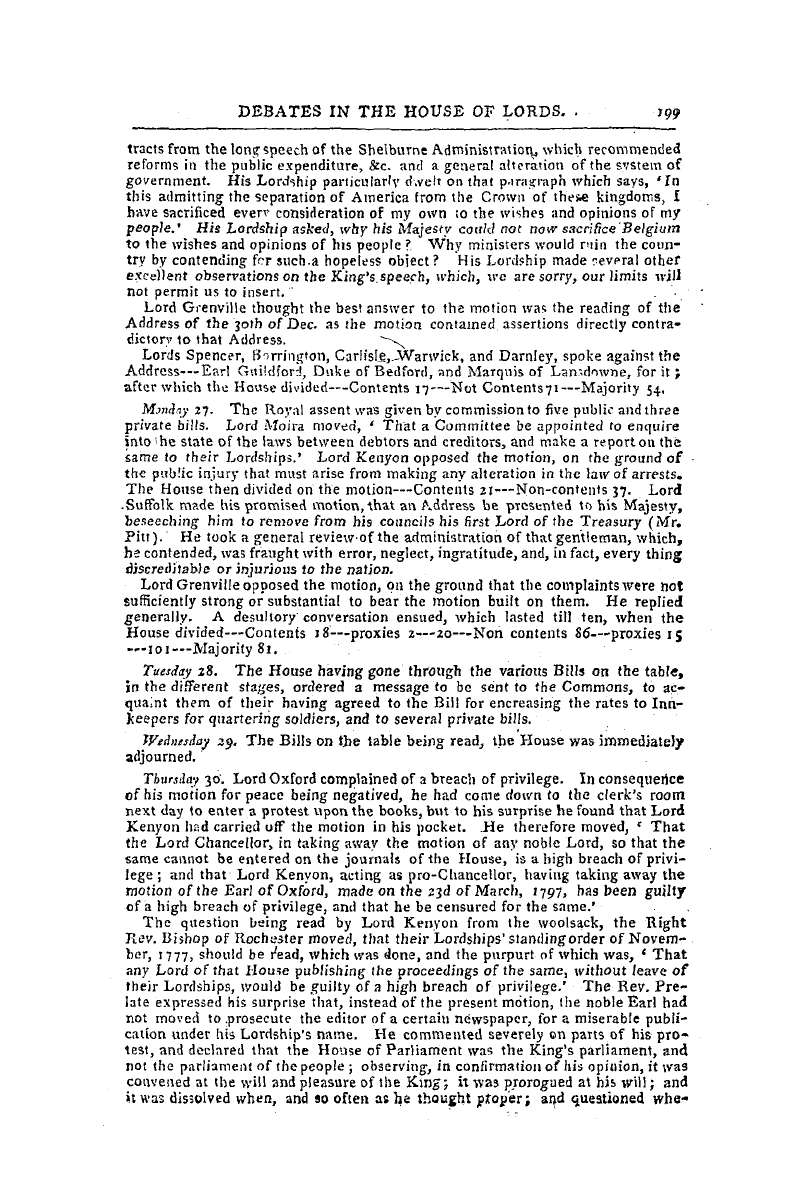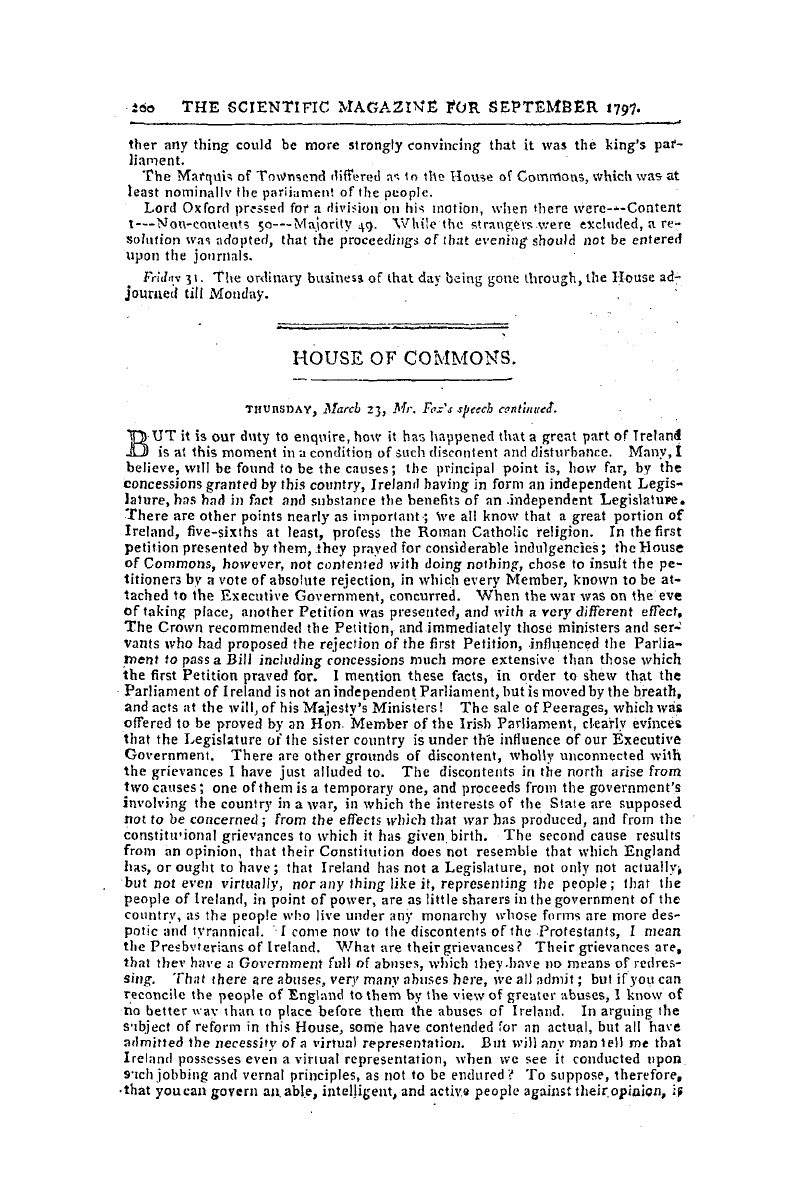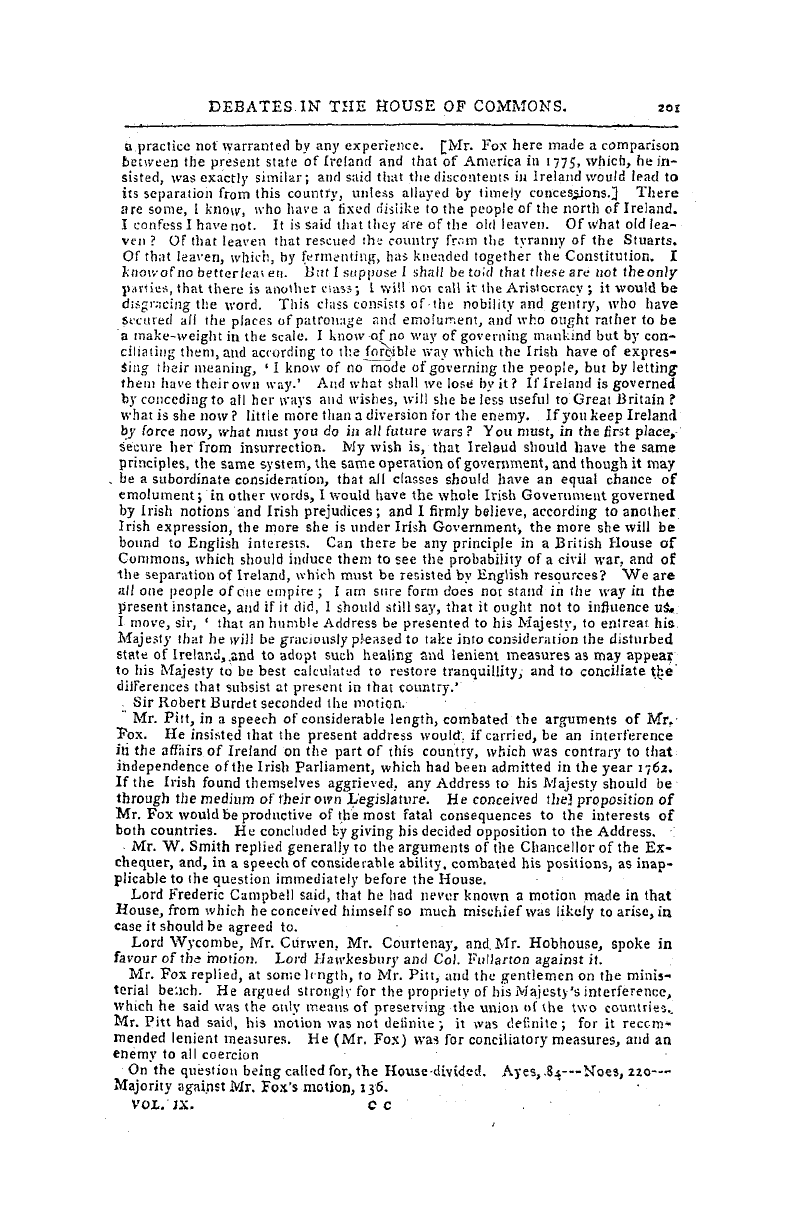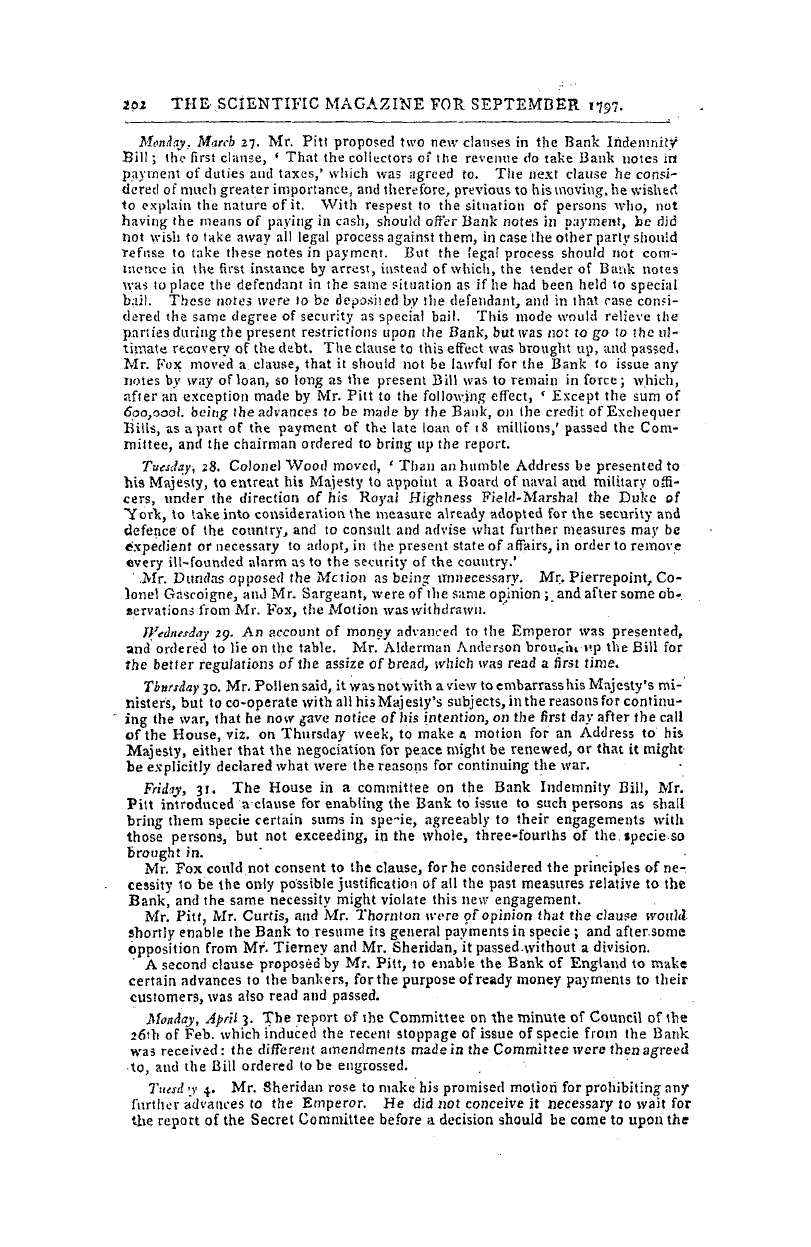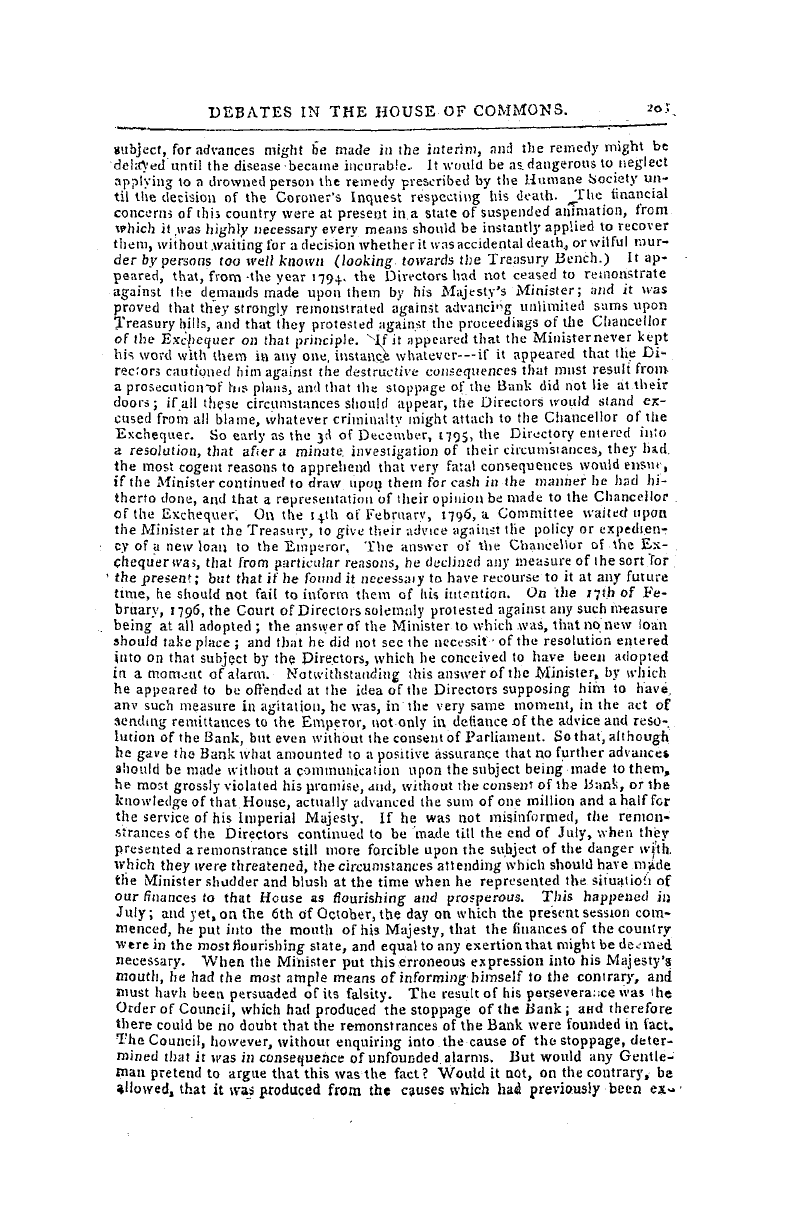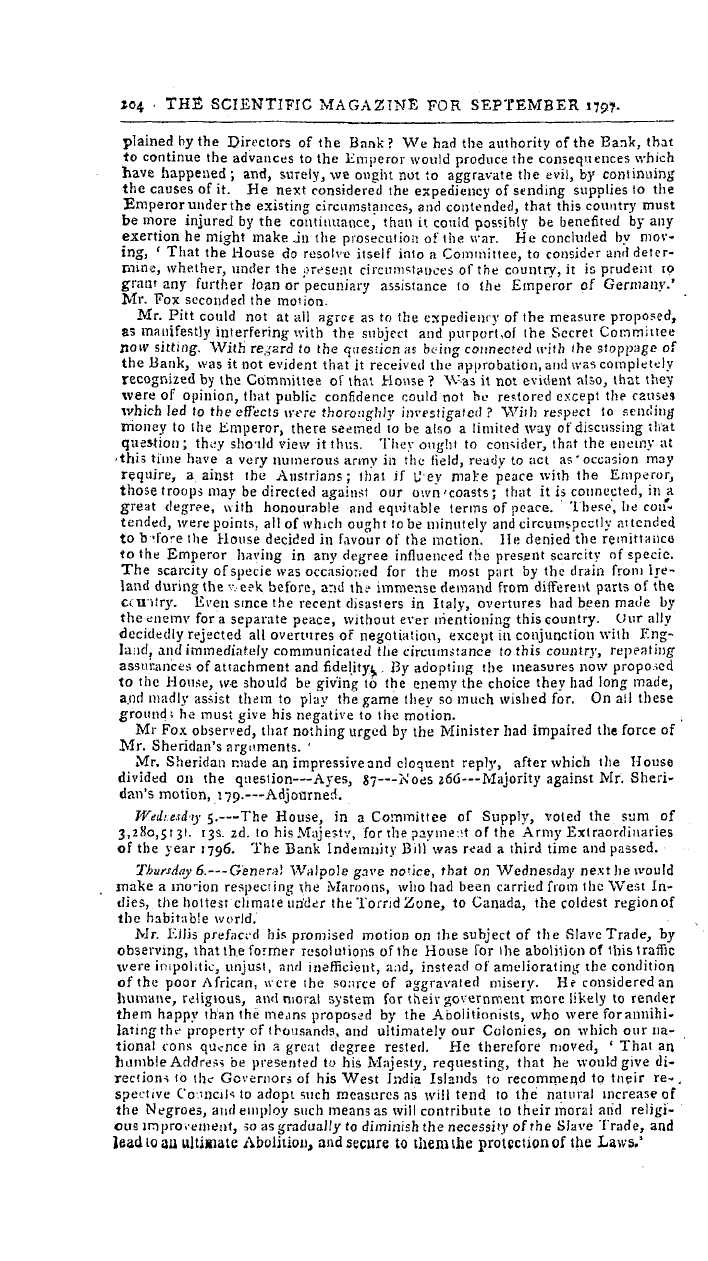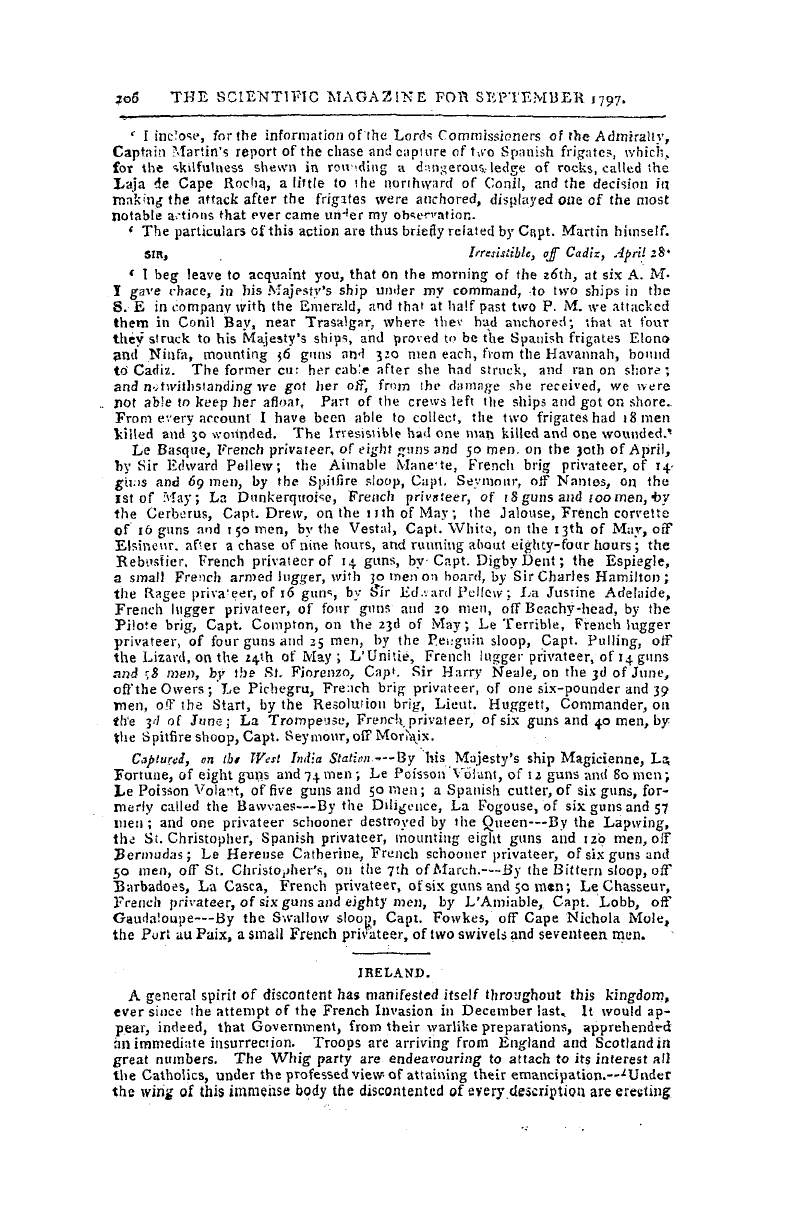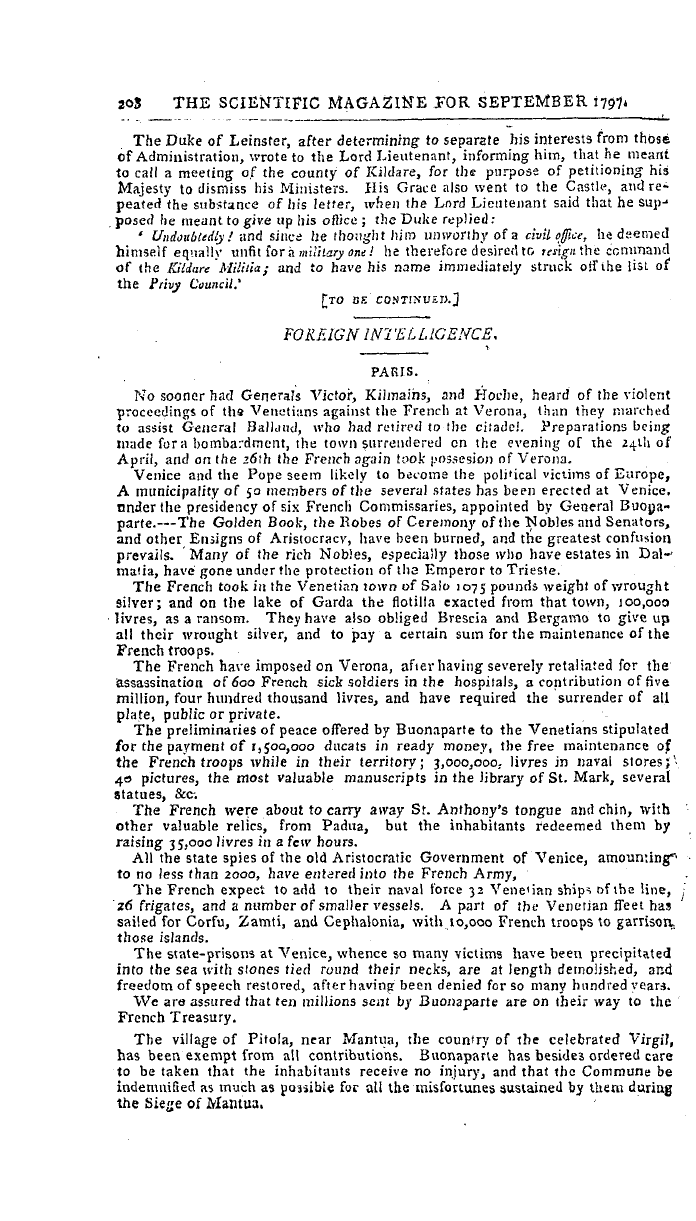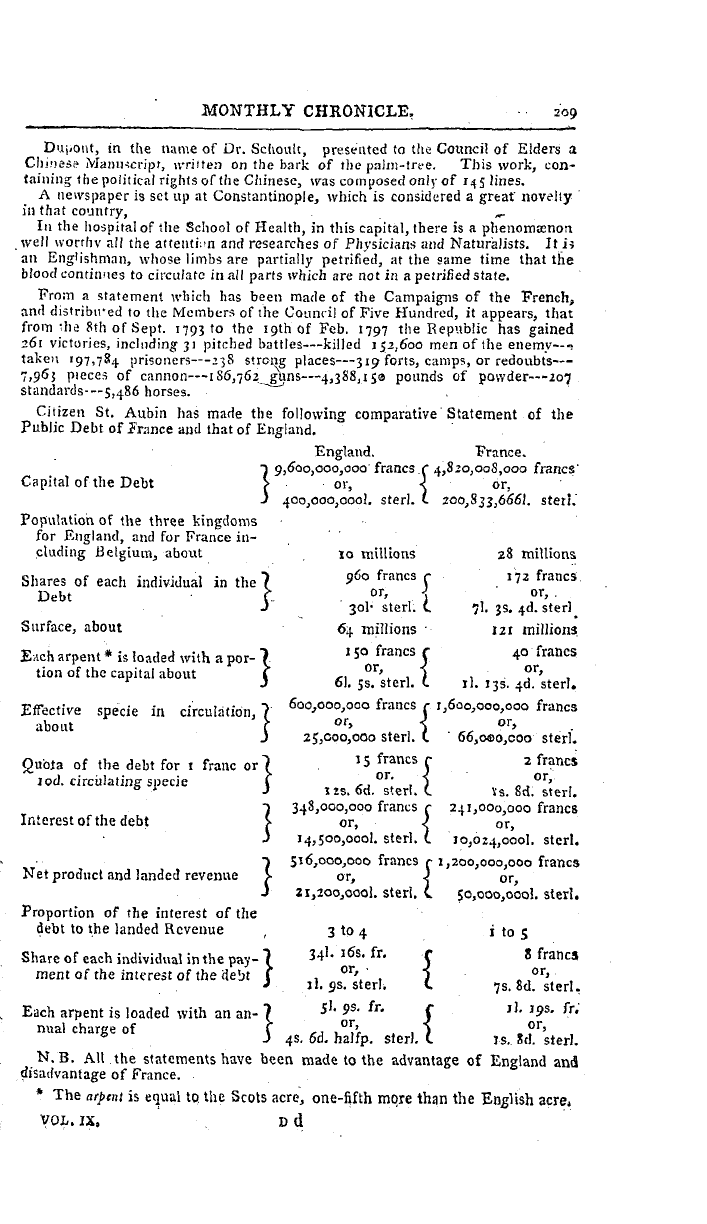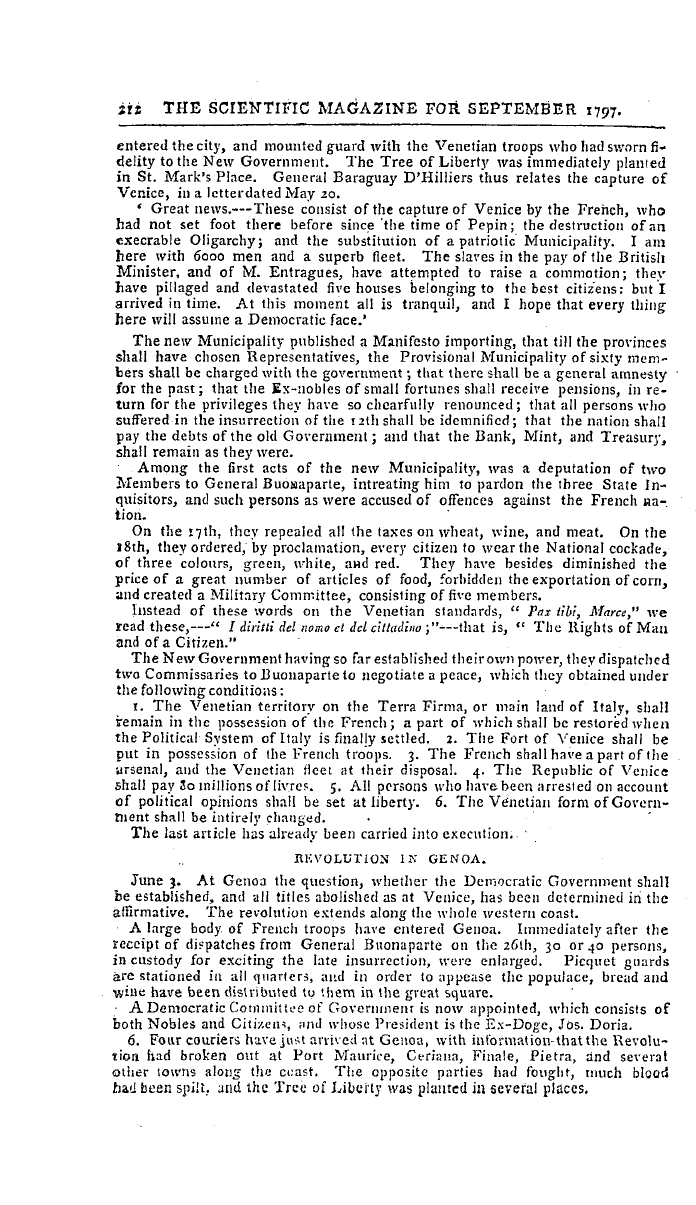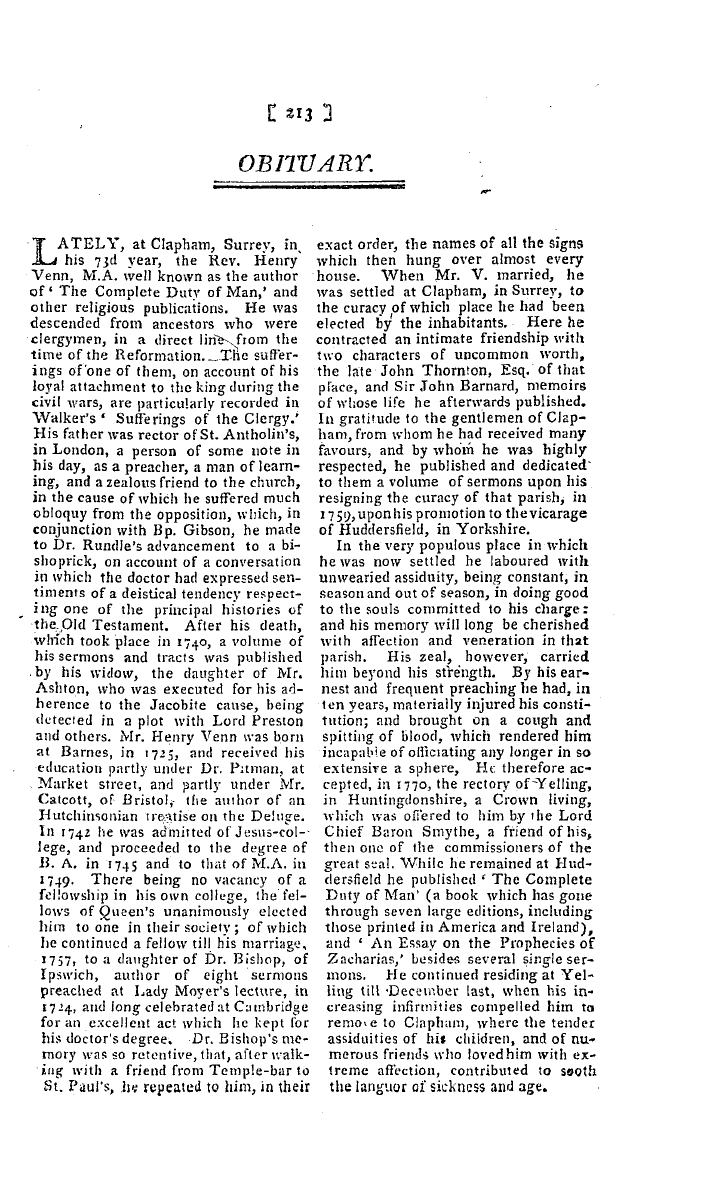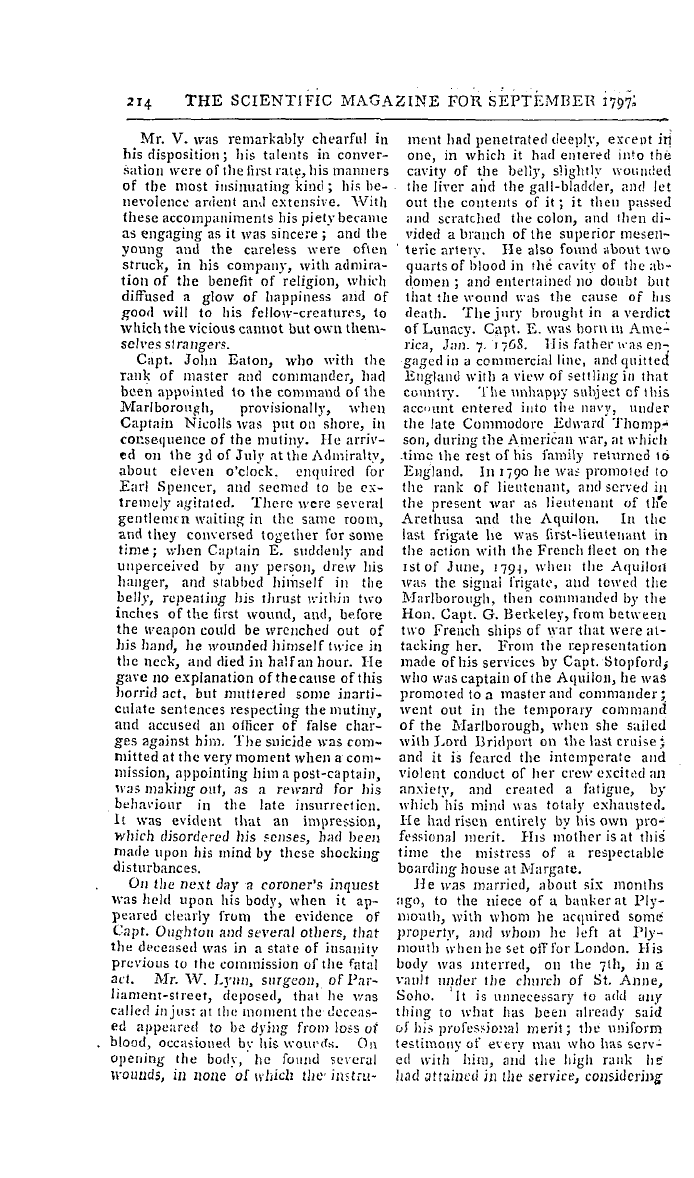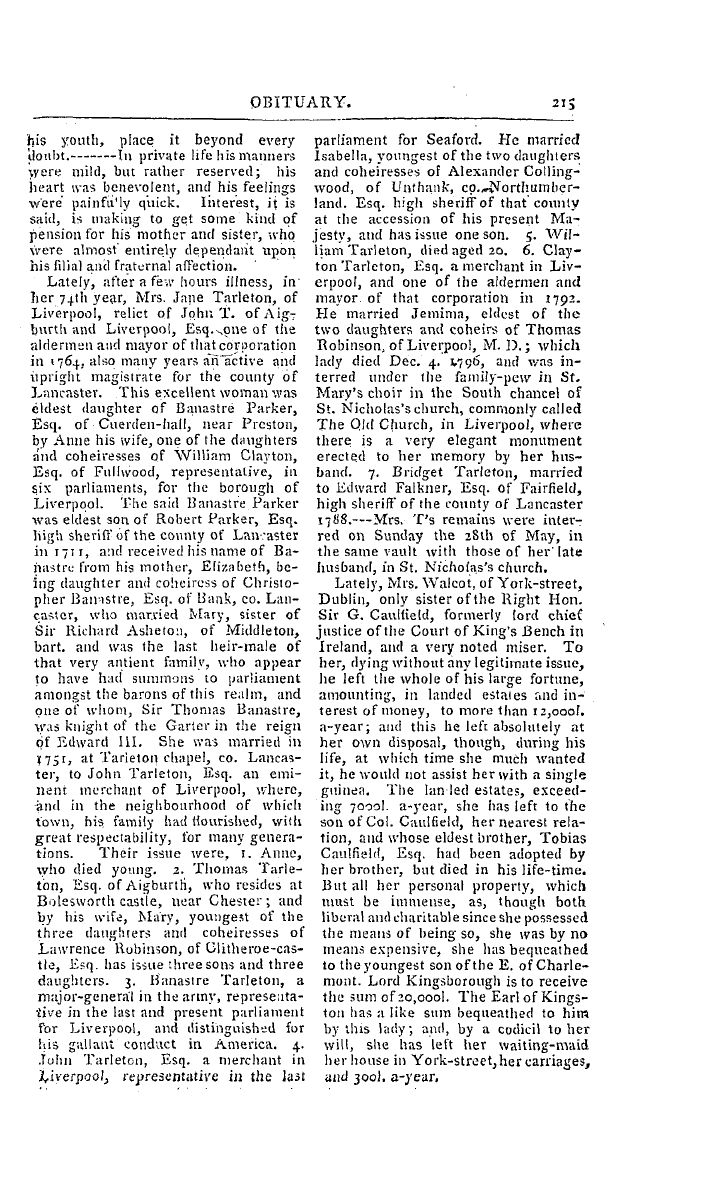-
Articles/Ads
Article HISTORY OF THE SCIENCES FOR 1797. ← Page 3 of 4 →
Note: This text has been automatically extracted via Optical Character Recognition (OCR) software.
History Of The Sciences For 1797.
' If the comet was , when nearest to the earth , about the 16 th , about five or six millions of miles from us , or more than twenty times the moon ' s distance , I apprehend , from its observed apparent diameter , it would hardly be less than one third larger than the moon . This would make it about three thousand miles in diameter , and somewhat considerably larger than Mercury . If the perihelion place
, which differs very widely , could he reconciled , the other elements stated in the letterto which I allude , would bring tin ' s comet to a very near agreement with that of x 59 6 and 16 99 , so as to make it probable they might be one and the same ; this would give a period varying from one hundred and three years and a half to one hundred and eight years and a half .
' Hitherto comets which have approached somewhat near to the sun , have generally been observed not to have been large . Perhaps the present is a new instance of the widom and benevolence which thus proportions them . '
THE THEORY OF COMETS . OF all the celestial bodies , comets have occasioned the greatest number of conjectures . They have been always a subject of terror to the vulgar , who have regarded them as omens of great calamities . Others have supposed them to be meteors in the higher regions of the air ; but some of the antients considered them as
revolving bodies like the planets . Seneca mentions two which he had seen , one in the reign of Claudius , and the other in that of Nero . He thought them to be above the moon , and declared his belief that they were the eternal productions of nature . What he observes is very remarkable : 'The time will come when the nature of comets and their magnitudes will be demonstrated , and the routes they take , so different from the planets , explained . Posterity will then wonder that the preceding ages should be ignorant of matters so plain and
easy to be known . It was not till some time after people began to throw off the fetters of superstition that any rational hypothesis was formed concerning comets . If Tycho Brahe was the first who gave them their due place in the creation , before his time several comets had been observed ¦ with exactness by some eminent menwho thought them below the
, moon . But he being provided with better instruments , observed with diligence the famous comet of 1577 , and found that it was far iibove the moon . Though few have come so near the earth as to have any diurnal parallax , all of them have what may be called an annual parallax . Their true' motion was first discovered from the observations of Sir
Isaac Newton on the great comet of 1680 . This descended almost perpendicularly to the sun with a prodigious velocity , ascending again , with the same velocity retarded , as it had been before accelerated . It was seen in the morning , in different parts of Europe , from the 4 th to the 25 th of November , in its way to the sun ; and in the evening , from the nth of December to the 9 th of March following .
Note: This text has been automatically extracted via Optical Character Recognition (OCR) software.
History Of The Sciences For 1797.
' If the comet was , when nearest to the earth , about the 16 th , about five or six millions of miles from us , or more than twenty times the moon ' s distance , I apprehend , from its observed apparent diameter , it would hardly be less than one third larger than the moon . This would make it about three thousand miles in diameter , and somewhat considerably larger than Mercury . If the perihelion place
, which differs very widely , could he reconciled , the other elements stated in the letterto which I allude , would bring tin ' s comet to a very near agreement with that of x 59 6 and 16 99 , so as to make it probable they might be one and the same ; this would give a period varying from one hundred and three years and a half to one hundred and eight years and a half .
' Hitherto comets which have approached somewhat near to the sun , have generally been observed not to have been large . Perhaps the present is a new instance of the widom and benevolence which thus proportions them . '
THE THEORY OF COMETS . OF all the celestial bodies , comets have occasioned the greatest number of conjectures . They have been always a subject of terror to the vulgar , who have regarded them as omens of great calamities . Others have supposed them to be meteors in the higher regions of the air ; but some of the antients considered them as
revolving bodies like the planets . Seneca mentions two which he had seen , one in the reign of Claudius , and the other in that of Nero . He thought them to be above the moon , and declared his belief that they were the eternal productions of nature . What he observes is very remarkable : 'The time will come when the nature of comets and their magnitudes will be demonstrated , and the routes they take , so different from the planets , explained . Posterity will then wonder that the preceding ages should be ignorant of matters so plain and
easy to be known . It was not till some time after people began to throw off the fetters of superstition that any rational hypothesis was formed concerning comets . If Tycho Brahe was the first who gave them their due place in the creation , before his time several comets had been observed ¦ with exactness by some eminent menwho thought them below the
, moon . But he being provided with better instruments , observed with diligence the famous comet of 1577 , and found that it was far iibove the moon . Though few have come so near the earth as to have any diurnal parallax , all of them have what may be called an annual parallax . Their true' motion was first discovered from the observations of Sir
Isaac Newton on the great comet of 1680 . This descended almost perpendicularly to the sun with a prodigious velocity , ascending again , with the same velocity retarded , as it had been before accelerated . It was seen in the morning , in different parts of Europe , from the 4 th to the 25 th of November , in its way to the sun ; and in the evening , from the nth of December to the 9 th of March following .










































